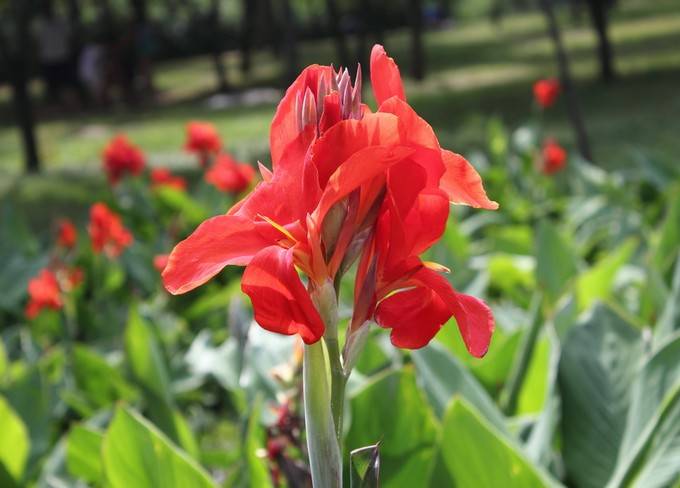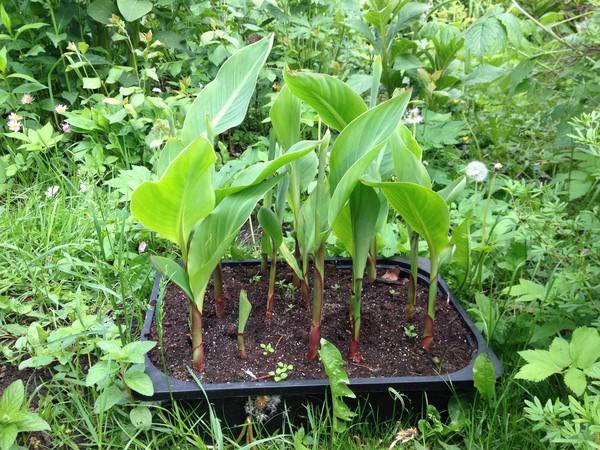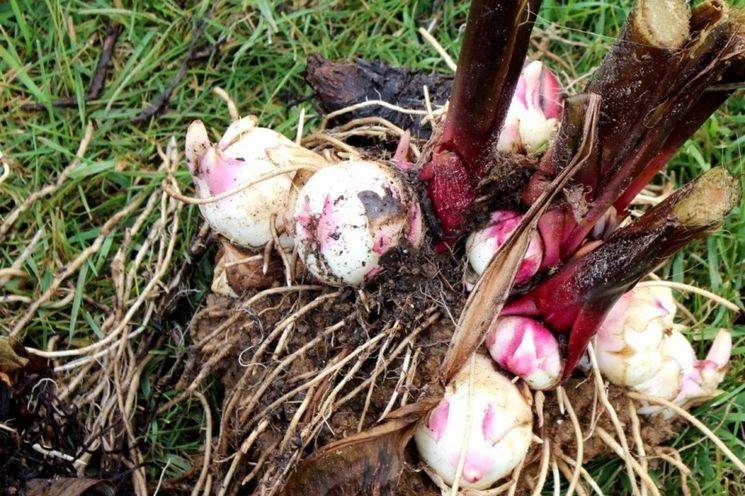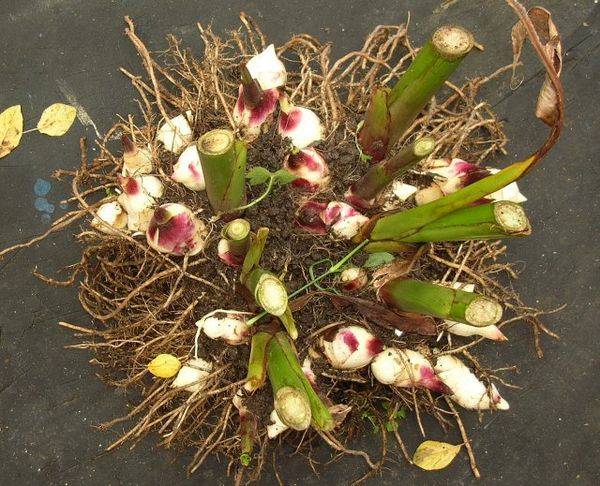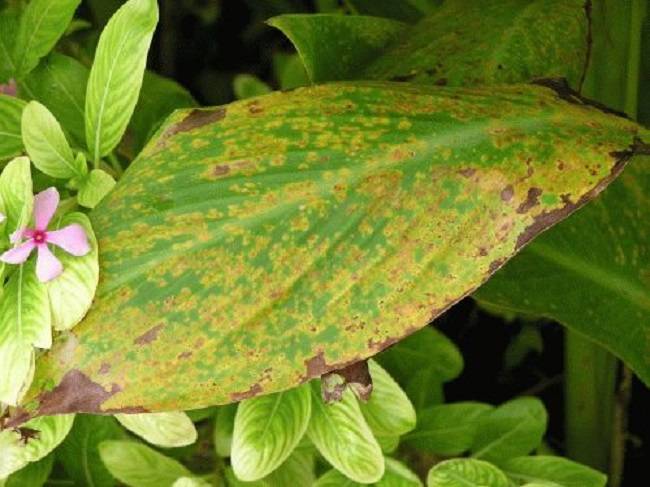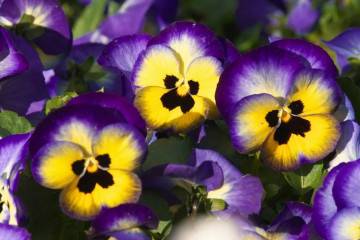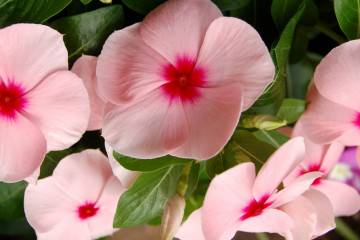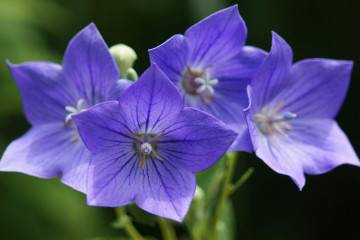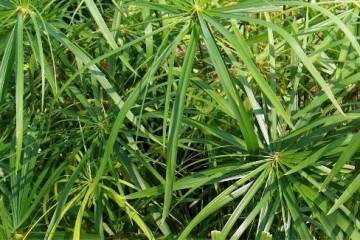Canna flower - care and planting in open ground
Content:
Canna is a flower that is very popular with gardeners. This culture has excellent decorative properties and can be a decoration for any flower bed. To achieve success in growing a horticultural culture, you need to provide it with quality care.
Canna - what is this flower
Canna is a plant that belongs to the monotypic Canna family. It contains more than 50 varieties of herbaceous plants. They can be grown at home or outdoors and look amazing.
The origin and appearance of the plant
In vivo culture grows in Central and South America. It is also found in China and India. The plant came to Europe in the 16th century, but flowers began to grow only in the seventeenth century.
Plant flower description
In appearance, the canna resembles a hybrid culture consisting of a mixture of banana and gladiolus or an orchid. The plant has only 2 minuses - it does not survive the winter outdoors well and does not smell at all. This is why the plant is difficult to grow in the garden. Moreover, it develops well at home on the windowsill.
The rest of the characteristics of the plant are solid merits. The main one is considered to be high resistance to diseases. Growing cannes is possible even for beginners in floriculture.
The canna is characterized by a wide rhizome. The flower has straight and thick stems. It has large and powerful leaves that are pointed or elongated. In length, they can reach 25-80 cm.
The flowers of the plant are asymmetrical and bisexual. Their size is 4-8 cm. Initially, the culture has a red tint. However, today, breeding achievements have made it possible to obtain many other colors - yellow, pink, orange. There are also multi-colored plants and even decorated with specks. The rarest white varieties are considered.
Popular types of canna for growing in the garden
Today, a large number of species and varieties of cannes are known. Each of them has certain features:
- canna indian. This variety has become the basis for almost all varieties that are on the market. It is the Indian eland that is called garden eland;
- canna red. For canna red, asymmetric flowers are characteristic, the size of which is 40-80 cm;
- canna lucifer. The plant reaches 55 cm in height. The canna Lucifer is characterized by thin green stems and broadly lanceolate leaves. The flowers are large and have a yellow-red hue.
Canna: planting and grooming outdoors
Planting and caring for a canna flower has certain characteristics. To do this, you need to correctly choose the planting material and provide the culture with optimal conditions.
Growing from seeds
Quite often, cannu is grown by the seed method. For this, it is worth choosing the right material for planting.
To achieve flowering at the end of June, planting work should begin in February.
You can also use another method. To do this, the seeds should be placed in the freezer for 1-2 hours, and then put in a warm place for 12 hours. As a result, the shell of the seeds will become softer and lumpy.
Seedling care
The plant requires light soil. It can be composed of peat and sand. These components must be mixed in equal parts. Before planting seeds, the soil should be disinfected, for which you should use a solution of potassium permanganate.
The seeds should be planted in a seedling box. This is done in several rows. The distance between the grains and the rows should be 6-8 cm. The seeds should be deepened by 2-3 cm.
Seedling care
The container with seeds should be systematically ventilated and watered with warm water. The sprouts will appear in about a month. It is not recommended to remove the film until the first 3 leaves appear. At the same time, you need to water and ventilate the sprouts regularly.
When and how to plant canna in open ground
When a sufficient number of leaves appear in plants, they must be transplanted into individual containers and begin to harden. To do this, the pots are taken out to a sunny place. The temperature should not exceed 16 ° C.
Further care
Flowers can be planted in open soil in spring, in May. If canna is grown in the garden, planting and care in the open field have certain characteristics.
Watering mode
Many people are interested in how to properly care for cannes. Water the flowers in moderation. This should be done once a week. From the moment the buds open until the seeds ripen, the amount of water is slightly increased. In this case, the frequency should be the same.
Top dressing
When caring for cannes, you need to provide for the introduction of fertilizers. During the growing season, flowers are fed 2-3 times with minerals. A complex composition is perfect for this. You can also use a mixture of 25 g phosphorus, 12 g nitrogen and 10 g potassium. This volume is enough for 1 m² of the garden.
Features of care during flowering
To prolong the flowering of a culture, it is necessary to systematically remove dried flowers. This can only be done if there is no need to obtain seeds.
Features of care during the rest period
After the end of flowering and before the cold weather begins, it is worth hilling the bushes high. This will help avoid damage to the root system. When the cannes have faded, the watering intensity should be reduced. It must be completely stopped by mid-September.
Cannes propagation by dividing rhizomes
In March, you need to divide the overwintered rhizome. As a result, each fragment obtained should have 1 large stem bud or 2-3 small ones. The sections of the cut should be treated with charcoal and slightly dried.
Then the rhizomes can be left for storage at room conditions or germination can begin. The second method helps to speed up flowering by 1-2 months. In this case, the rhizomes must be placed in ordinary sand and sprinkled to the level of the buds. They should fit fairly tightly.
During germination, the sand should be moistened all the time and the temperature should be maintained at 20-24 ° C. Sometimes there is a need to heat the container from below. To speed up the process, you can cover the drawer with plastic wrap.It should be removed 1-2 times a day for 30 minutes. This is done for airing and watering the planting material.
When the first green shoots appear, the film should be removed and each bush should be moved to a separate container. Ordinary sand is perfect as a soil. Germination of rhizomes in individual pots is carried out at a temperature of 16 ° C. This will help strengthen the bushes before planting them in the ground.
How to organize storage of Cannes in winter
You need to store the rhizomes in semi-dark rooms with low humidity. About a week after digging up the plant, its rhizome must be cleaned of the ground and placed in special containers. They are sprinkled with sand, peat and pine needles. You need to keep containers in a room with a temperature of 6-8 ° C.
When storing rhizomes, it is necessary to systematically inspect and cut off the areas affected by rot. In this case, the cut area should be treated with ordinary iodine. It is important to avoid highly wetting the substrate and lowering the temperature.
Potential pests and diseases
When growing a perennial crop in high humidity conditions, there is a risk of developing bacteriosis. It is accompanied by darkening of the buds and the appearance of spots on the leaves. Such bushes will have to be removed.
Also, in conditions of high humidity, rust fungus often develops. The leaves are covered with rusty spots and gray rot. To cure the disease, you need to remove the affected fragments in time.
Of the pests, adult bushes most often encounter butterfly caterpillars, spider mites, and aphids. To cope with parasites, it is worth using insecticides, strictly following the instructions.
Canna flowers are a popular garden plant that decorates any flower bed. In order for a crop to be successful, it needs complete and high-quality care. It should include timely watering and proper fertilization.
